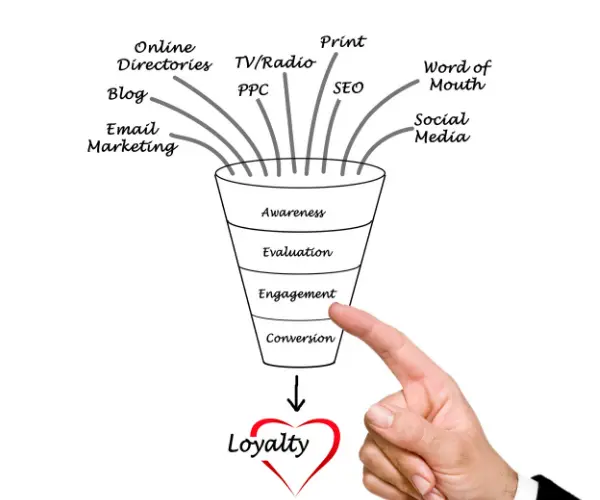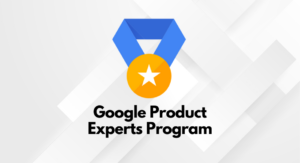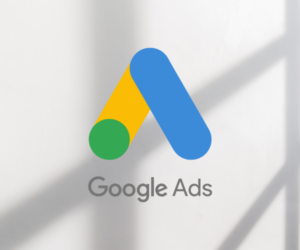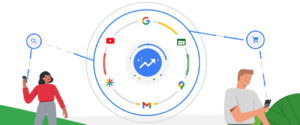When search engines came into existence, their primary goal was to make the web more accessible by helping internet users browse the web. As more and more websites were being built every minute, it was not practically possible to navigate to a specific website without being aware of its domain name or the IP address.
Imagine the internet without search engines!
Websites being built were basically like islands away from the main inhabited world. Only the dwellers of the islands, the owners of the websites, knew they existed. No one else did.
Search engines started reaching these websites and indexing them into their databases so that when somebody searched for the related information, the relevant websites or web pages could be presented to them on the search engine result page. Now, Internet was truly more accessible. Users could navigate to the websites which could otherwise have been nothing but inaccessible islands.
Even today, the websites that are not indexed by search engines, stay in the deep where they can be reached only by the people who know their direct addresses. The web that is accessible to search engines and what we browse today is called Surface web or the clear web. But, it’s surprising to know that the clear web is estimated to be about 1% to 4% of the entire web today. The rest is the deep web, not accessible to search engines.
Okay, so that was the background of the search engines. Things have changed drastically today.
The Behavioural Shift
Search engines have become much more intelligent and as the internet itself has come of age now, the way we browse the web or use search engines have changed a lot too. The behavioural shift is literally huge.
Today, people don’t use Search Engines to only browse the web. There’s a lot more that is expected from the Search Engine Result Page (SERP). People need information and answers to their questions.
To understand the Psychology of search, we have to understand that a user who comes to a search engine to search, has a thought in his mind which he is going to put into words. So quite obviously, words, phrases, or the queries that he uses, becomes secondary here. The thought that runs in his mind is far more crucial.
So, there are two things – intent and the content. The thought in his mind is the intent of the search and the queries that he uses are the content.
As a marketer, you should focus on the intent. If you understand the intent, content is sorted.
The Psychology of Search
Going back to the search behaviour context, when people search for something on a search engine, they expect the result page to be in a specific format and contain specific information. If he gets what he perceived the results to be like, he stops searching to browse the results page, and if not, he modifies and refines his queries to express his thought more precisely. This process continues till the results that he gets matches with his expectations.
A search engine like Google understands this behaviour very well. That’s the reasons you see a different format of result page for different types of queries.
Understand that different people may use different words to express the same thought or to look for the same thing. It’s one of the reasons why about 15% of search queries on Google are new, they have never been searched before.
Hence, do not be driven by the keywords, be driven by the intent behind them.
Where Advertising Is Not Advertising
Advertising on search is drastically different. As Brad Gedds rightly puts it in his book, people are looking for information when they are searching Google. As advertisers you only need to give them what they want – the information.
Giving exactly what someone is looking for can’t be advertising to be precise.
Now, you may wonder, you are not in the business to give away information free and not sell.
No, that’s not right. If you understand the intent of the searches, you will understand it better.
You must have read about Conversion Funnel. There are different stages to it.
What’s crucial for you to pay attention to is that users’ search queries and the intent behind them keep shifting as they move to different stages of the funnel.
Let’s take an example…
Jakes needs to buy a DSLR camera, his searches Google for – How to buy a DSLR camera.
His query signifies the following:
- He is has no or very limited knowledge about DSLR cameras
- He is unsure of the very process of buying one
- He has questions like – what, how, which, where, etc.
He clearly is at the first stage of the funnel we talked about. Here, the pricing discounts, huge options, faster delivery, etc. will not help much. He simply does not need all that right now.
Here, he would like to read and watch contents that talk about the very process of buying DSLR. He needs answers to the questions he has. An intelligent advertiser will bring him to a page that addresses his questions, not to sales page that has nothing but a list of specifications, images, etc. A sales page would be more relevant when this user moves down the funnel to next steps.
To sum up, if your search marketing strategy is aligned to address the intent via your targeting settings and the creatives, you will get much better results. Simply chasing keywords, without knowing the intents will not subject your marketing spends well and your cost per acquisition will be much higher.
Sharing is caring!







